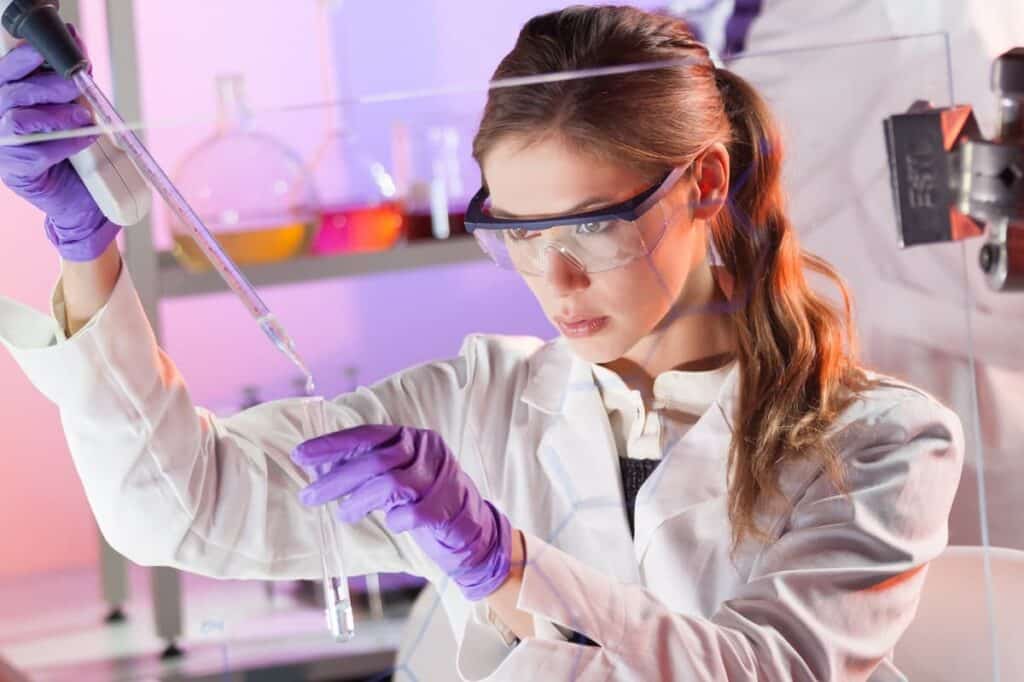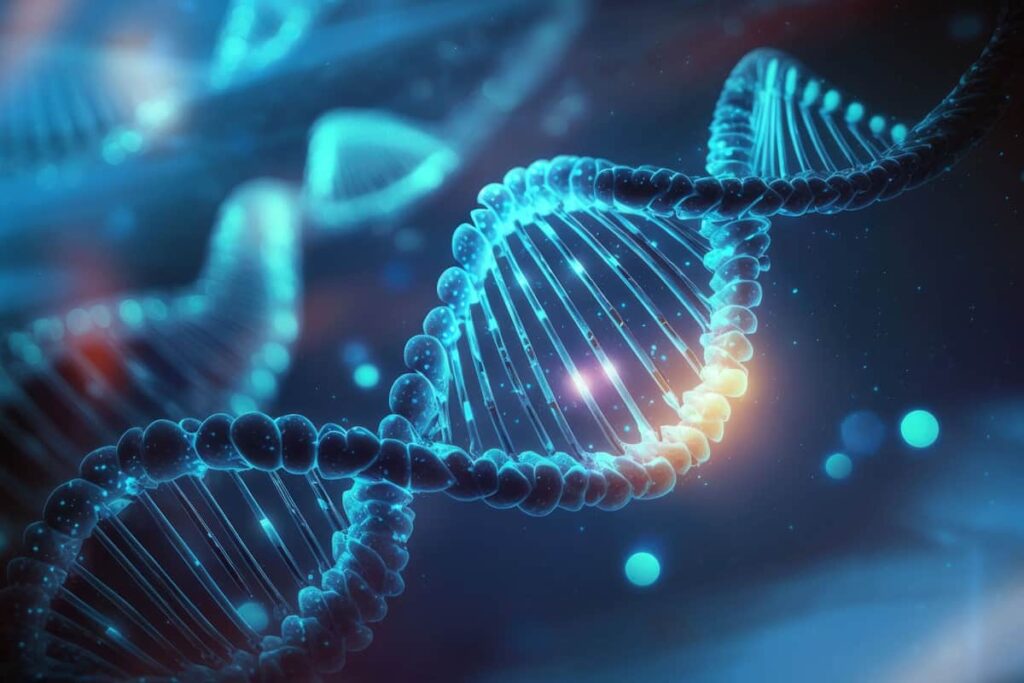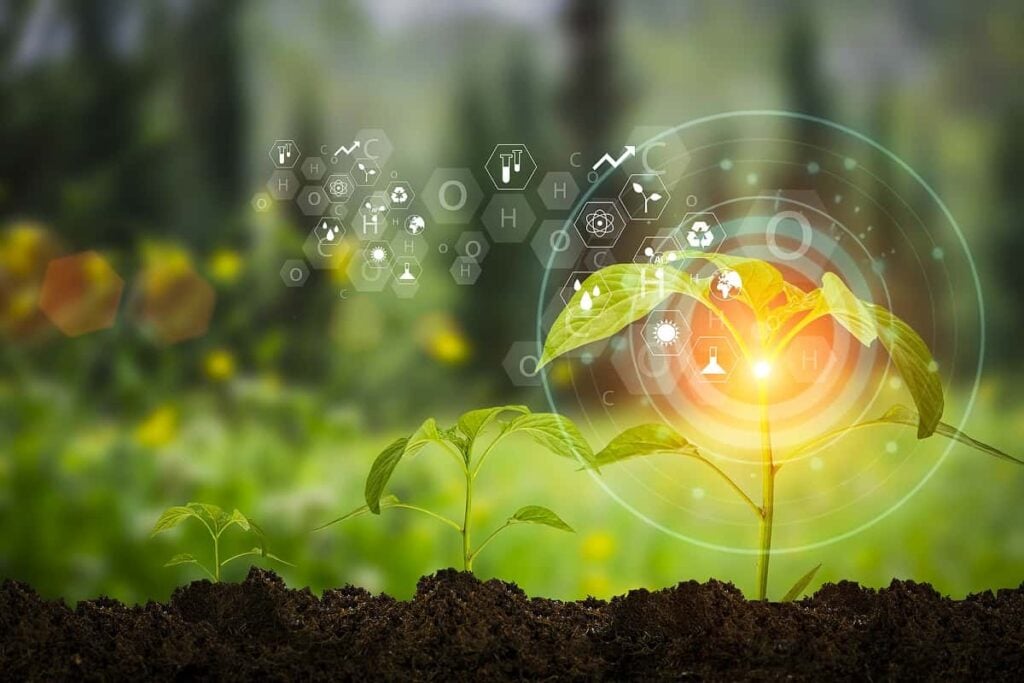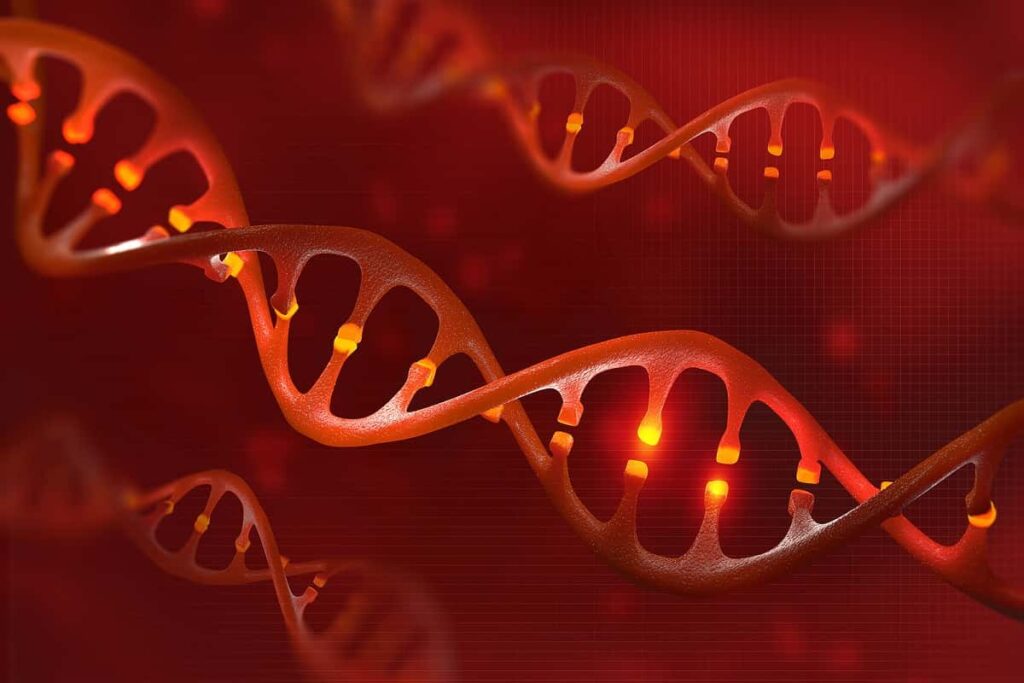What is Biochemistry and Why it Matters
Table of contents
Table of contents

If you’re a regular reader of Nanalyze, you’ll know that we’re big fans of the work that Bryan Johnson of Kernel is doing, essentially trying to enable read/write access to the brain. In one of his interviews, he remarks that ever since we first booted up a cell with human engineered DNA, we entered a new era that according to his mentor Peter Diamandis, “99.9% of people have no idea we’ve entered“.
What they’re referring to is the fact that humans have essentially discovered the “Engines of Creation” that Eric Drexler was talking about. While everyone is running around slinging political mud at each other like a bunch of primitive monkeys, mankind is working on one of the most transformational technologies that may ever be invented. It’s called synthetic biology and it’s why everyone should have a basic understanding of biochemistry.
When you were choosing your major in college, you either had your mind set on a particular field already or you needed to peruse all the subject areas to see what sounded like a good fit. Each subject area will have a certain stereotype associated with it. Some fields sound boring, like electrical engineering or accounting. Some fields sound inherently difficult, like physics or mathematics. Other fields you may not have an idea of what they do because they never sounded compelling enough to research. That’s the case for us with “biochemistry” and that’s why we thought, as investors, we should edify ourselves on what turned out to be a very relevant and interesting area of the sciences.
What is Biochemistry?
If we lookup the basic definition of biochemistry, this is what we get:
the branch of science concerned with the chemical and physico-chemical processes and substances which occur within living organisms.
So it’s a bit different from chemistry since it’s all about the study of chemical processes in living organisms. Here’s why it came about according to the “American Chemical Society”:
Biochemistry emerged as a separate discipline when scientists combined biology with organic, inorganic, and physical chemistry and began to study how living things obtain energy from food, the chemical basis of heredity, what fundamental changes occur in disease, and related issues.
The most basic premise is that you are using living things to take INPUT X and turn it into OUTPUT Y in the most efficient manner possible. If you think about humans as a complex organism, we are able to utilize the equivalent of several pounds of vegetative material to power one of the most complex and amazing machines on the planet. The problem with us though, is that the “output” from that process has no real use except maybe as fertilizer.
In the U.S. alone, there are approximately 13,500 chemical manufacturing facilities in the United States owned by more than 9,000 companies. These are giant operations which consume a great deal of energy, require a large workforce to maintain, and generate a great deal of pollution. Imagine how much energy and effort goes into building complex mechanical contraptions like this:

Think about how inefficient these plants have been over the decades as they’ve sat there consuming resources and feeding the mass consumerism that we enjoy in today’s modern society. Now think about this. What if instead of using these inefficient plants, we engineered biological organisms to produce chemicals by modifying the DNA of the organisms so they did what we needed. The simplest way to think about it is to visualize those punch-cards we used our dad’s used back in the day. If that’s beyond your time, here’s what an IBM punch card used to look like:
In the olden days of mainframe computing, we used a punch card like the ones seen above to provide the computer with a set of instructions. With DNA, it’s pretty much the same idea except it’s like having precisely these many punch cards:
The above pile of phone books shows roughly the amount of data that a strand of DNA contains, approximately 700 gigabytes of data. DNA is one giant punch card that just recently we’ve been given the hole punch for. That hole punch is called “gene editing” and it’s been all over the news lately due to a nasty lawsuit that will determine who has the commercial rights to one of the most exciting discoveries known to man. This biological “hole punch” called CRISPR will soon let us change every single characteristic we like for any organism and then “boot it up” so we have our own little biological nanobots doing things for us. Since organisms are the most efficient biological factories (or engines of creation) known to man, it makes sense that we should be modifying them to produce as many industrial chemicals as possible.
The use of synthetic biology for creating things like biofuels (primarily) was off to a rough start as evidenced by the cratering stocks involved in this space like Amyris (NASDAQ:AMRS) and Gevo (NASDAQ:GEVO). Fast forward to today and the potential is even greater but a different model is now being applied. Now you have “nanobot factories” like Ginkgo Bioworks and Zymergen that are using artificial intelligence, robotics, and gene editing in order to create little tiny biological chemical manufacturing plants.
Why it Matters
Let’s say you’re a chemical plant that uses a particular enzyme in your production process. You can then go ask Ginkgo or Zymergen to take that enzyme you use and modify it over millions and millions of iterations using the principles of biochemistry. The speed at which they can perform this process has just hit “hockey stick growth” as seen below:
The end result is an optimized enzyme that meets your requirements and saves you millions of dollars. Startups like this that are using synthetic biology to completely overhaul the industrial chemical manufacturing process are as secretive as you would expect. While we may not have detailed information about what they’re working on, we can take a look at some examples of startups that are using biochemistry and synthetic biology in order to create some pretty complex and useful outputs from some basic interesting inputs:
- Company: Verdezyne
Input: Palm oil
Ouput: Diacids (found in fragrances, cleaning products, coatings, lubricants) - Company: Lygos
Input: Low-cost sugars
Ouput: Malonic acid (found in polyesters, coatings, electronics) - Company: GreenBiologics
Input: Agricultural waste (like cornstalks)
Ouput: Butanol and acetone - Company: Joule
Input: Carbon Dioxide, Sunlight, Water
Ouput: Ethanol and diesel
These startups are backed by some big dollars and some big names, however the future business model is a bit hazy here. Will we have the chemical companies going directly to the creators of the synthetic organisms like Ginkgo or will we have startups like the ones mentioned above doing all the production and selling to the chemical companies, only to get acquired once the technology is proven? The one thing that we can be sure of here is that the large chemical producers will profit from the use of biochemistry, synthetic biology, and gene editing, consequently we can expect shareholders in these companies to reap the benefits.
Conclusion
If you have children, you may want to steer them towards biochemistry as a major because there is a lot of work to do. According to Statista, total revenue of the global chemical industry in 2015 exceeded 5 trillion dollars. This morning when you’re tempted to talk about how much political mudslinging there was at the Oscars or who wore the cutest dress, do the world a favor and tell someone how exciting biochemistry is instead.
Sign up to our newsletter to get more of our great research delivered straight to your inbox!
Nanalyze Weekly includes useful insights written by our team of underpaid MBAs, research on new disruptive technology stocks flying under the radar, and summaries of our recent research. Always 100% free.

















